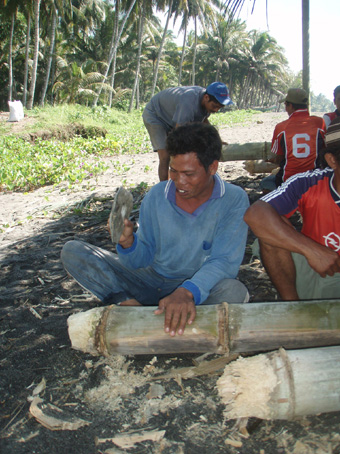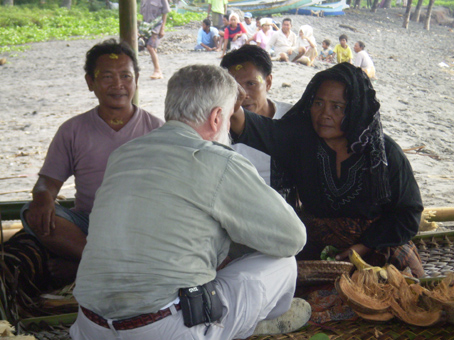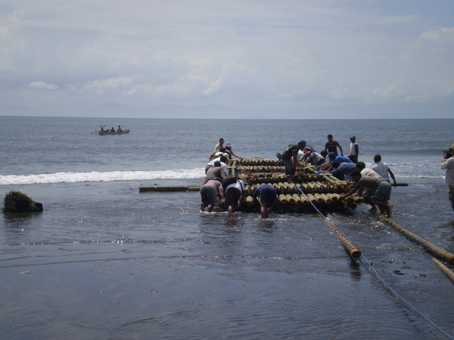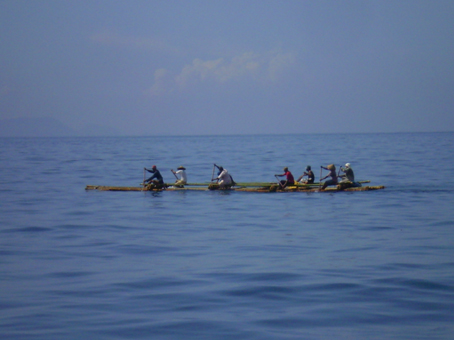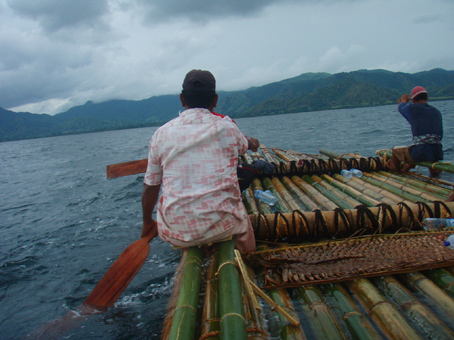First Mariners – BBC project 2008
One of the most recent experiments by the First Mariners Project, which seek to explore how hominins of the Lower Palaeolithic, up to a million years ago, might have succeeded in the sea crossings they have been demonstrated to have accomplished, occurred at Ales Strait. This is what separates Lombok from Sumbawa to the east, and must have been traversed by colonising populations before they could reach Flores, even further east, at least 840,000 years ago. This experiment was conducted in partnership with BBC, in preparation of a segment of the TV series The human journey, in February and March 2008. This was the first time green bamboo has been used instead of dried in such a maritime experiment. Note the use of stone choppers.
In a long and intricate ceremony, a shaman blesses the raft, its crew, and here its captain, the expedition leader. Despite the largely Muslim character of Lombok’s people, when it comes to confronting the dangers of the sea, the powers of shamans continue to be relied upon. The participants are seated on the completed raft, immediately before its launch.
The bamboo raft for the first experiment attempting to cross Ales Strait (Lombok to Sumbawa) is successfully launched. It comprises 24 bamboo floaters arranged in two tiers, 4 thwart timbers, and is fastened by rattan, a split forest vine (calamus sp.), and tali ijuk, a hand-made string of palm fibre. It weighs 1100 kg and is designed for a crew of 8, but can carry up to a dozen people easily. It is 13.6 m long and maximal (at stern) 3.25 m wide.
5 March 2008, attempt to cross Ales Strait. The photograph was taken from one of three escort ships, about half way between Lombok and Sumbawa. The 8 men have made excellent progress in superb weather.
Approaching the west coast of Sumbawa, the sea has become choppy and the weather deteriorates fast. Despite the closeness of the target coast, the crew battles for another 5 hours to achieve landfall, in atrocious weather conditions. The crossing took 10 hours and 25 minutes. Both the crew’s and the raft’s performance were outstanding.
